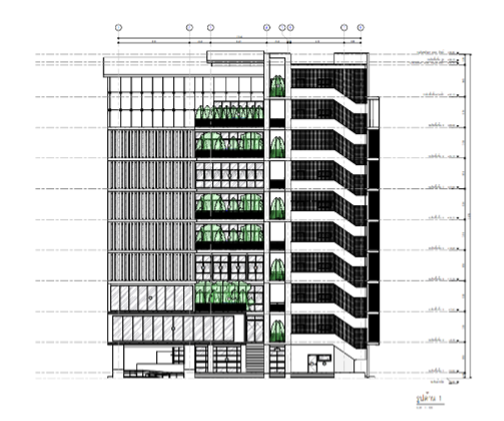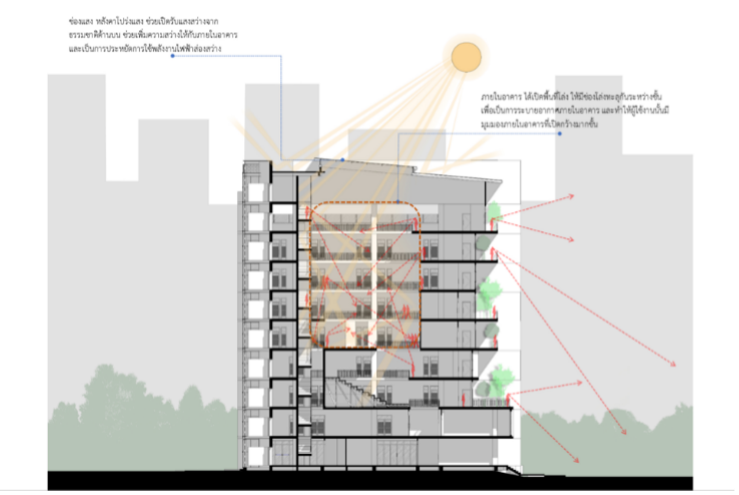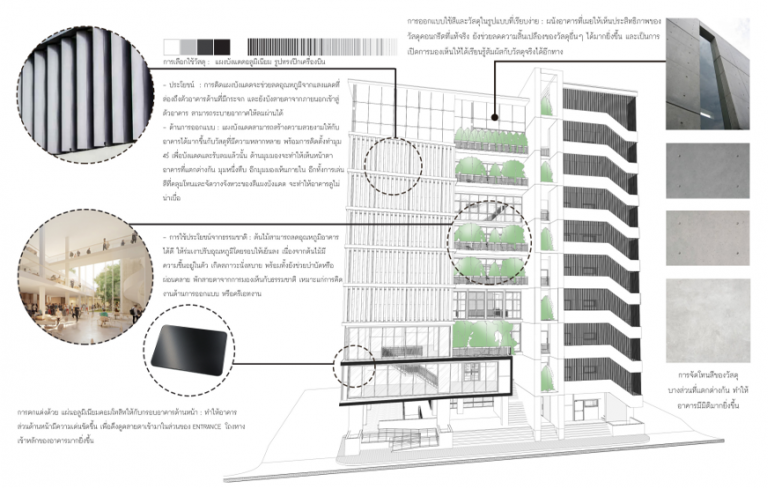Energy and Climate Change (EC)
Table of contents
Energy Efficient Appliances Usage
Example of Energy Efficient Appliances Usage: Use of LED lighting and lamps for offices (left) (Faculty of Science and Technology, RMUTP) and LED lighting and lamps with light and motion sensor for toilets (right) (Faculty of Induatrial Textile and Fasion Design, RMUTP)



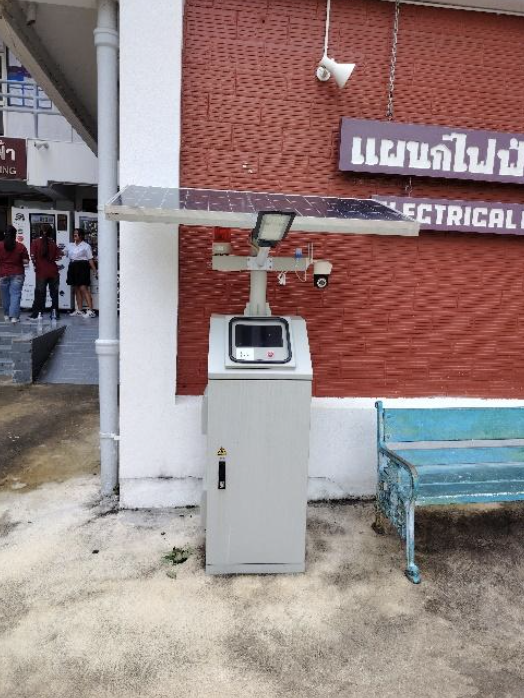
Example of Energy Efficient Appliances Usage: Use of Air conditioner with Energy Saving Label No.5 that certified by the Electricity Generating Authority (EGAT) of Thailand
(Faculty of Architecture and Design (Left) and Faculty of Liberal Arts (Right), RMUTP)
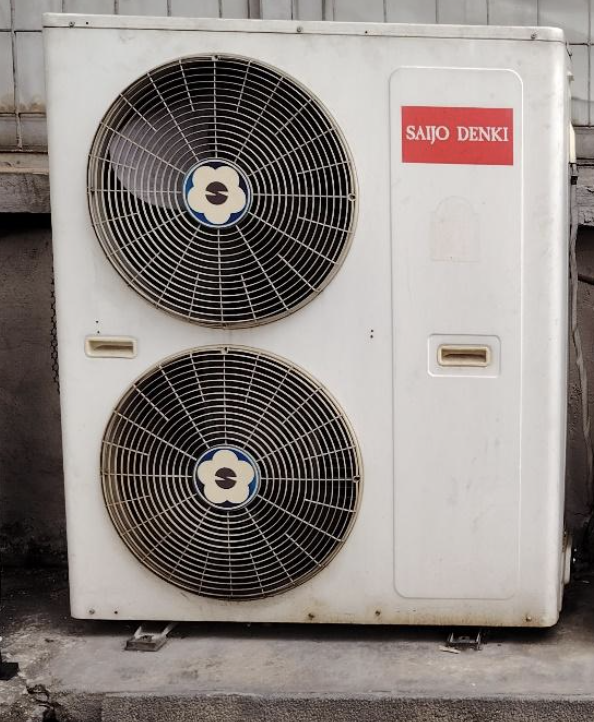
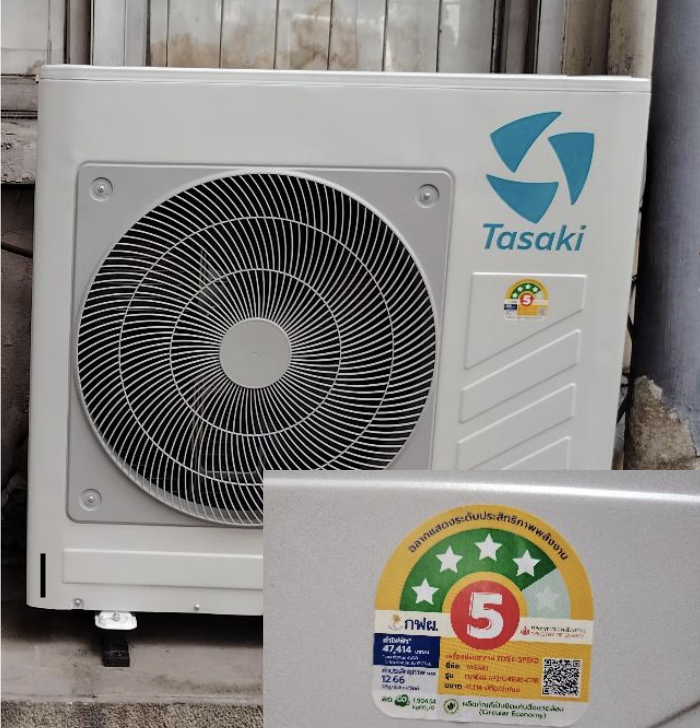
Example of Energy Efficient Appliances Usage: Use of Computers with Energy star label (Faculty of Science and Technology, RMUTP)
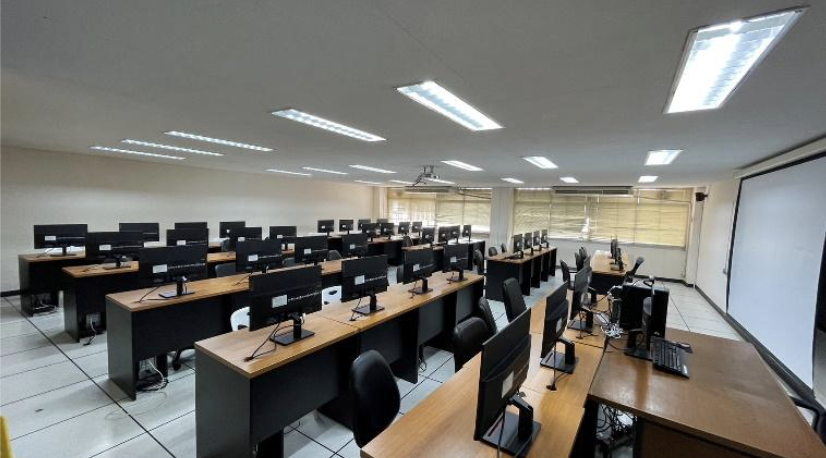
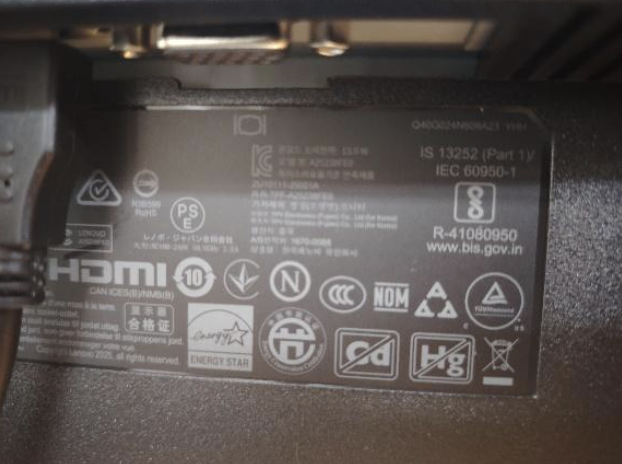
Rajamangala University of Technology Phra Nakhon has implemented energy conservation measures through the use of high-efficiency equipment in various areas as follows: 1) Air Conditioning: We have installed energy-saving air conditioners certified with the Energy Saving Label No. 5 from the Electricity Generating Authority of Thailand, replaced old air conditioner models with new ones, installed supplementary energy-saving devices, and performed regular maintenance and cleaning. 2) Lighting Systems: We have switched to more energy-efficient LED lamps in place of older fluorescent lamps and installed motion-activated automatic lighting systems in restrooms.3) Office Equipment: We have procured computers that meet the Energy Star label standard for efficient energy consumption. 5) Renewable Energy: We have installed solar panels to generate electricity for use within the university and utilized solar-powered spotlights for exterior areas.
Number of appliances and energy Efficient appliances
| Appliance | Total Number | Total number energy Efficient appliances | Percentage |
| Lamps | 24,801 | 15,188 | 61% |
| Air conditioners | 1,781 | 1,447 | 81% |
| Computers | 1,678 | 1,678 | 100% |
| Printers | 134 | 134 | 100% |
| Average Percentage | 28,537 | 18,358 | 64% |
Smart Building Implementation

Note: One building could be classified as a smart building if it has a minimum of 5 features. Please add the total smart building area from buildings which are classified as smart buildings.
The evidence provided may also include maps showing the location, area size, or distribution of facilities relevant to the indicators.
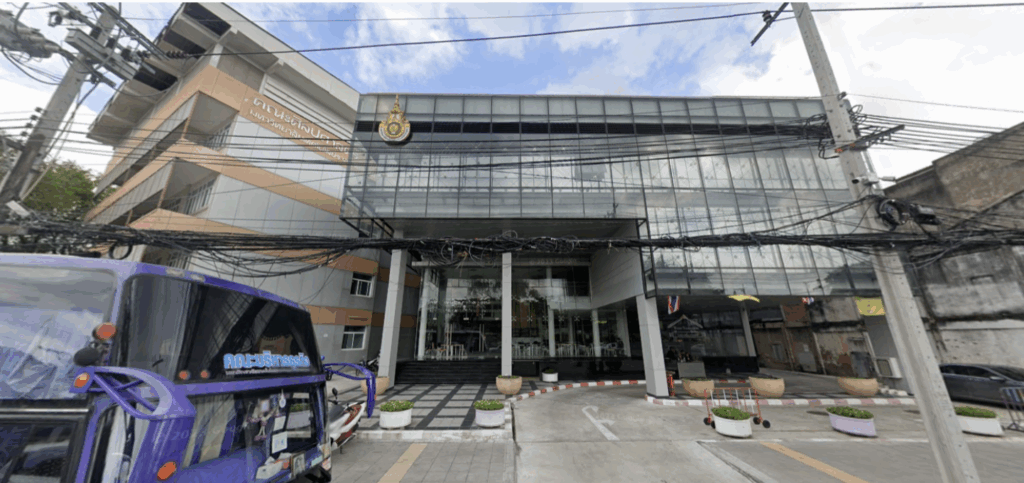
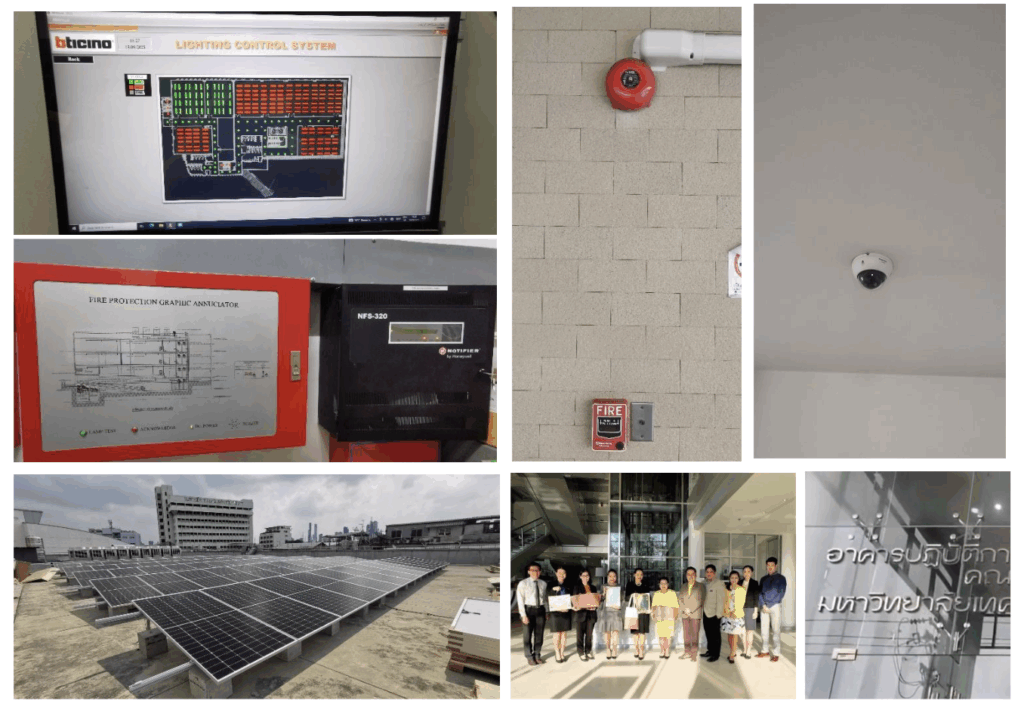
The Hotel and Tourism Operating Building with the implementation of smart building feather, The faculty of Liberal Arts, Rajamangala Univeristy of Technology Phranakhon
Renewable Energy Sources in Campus
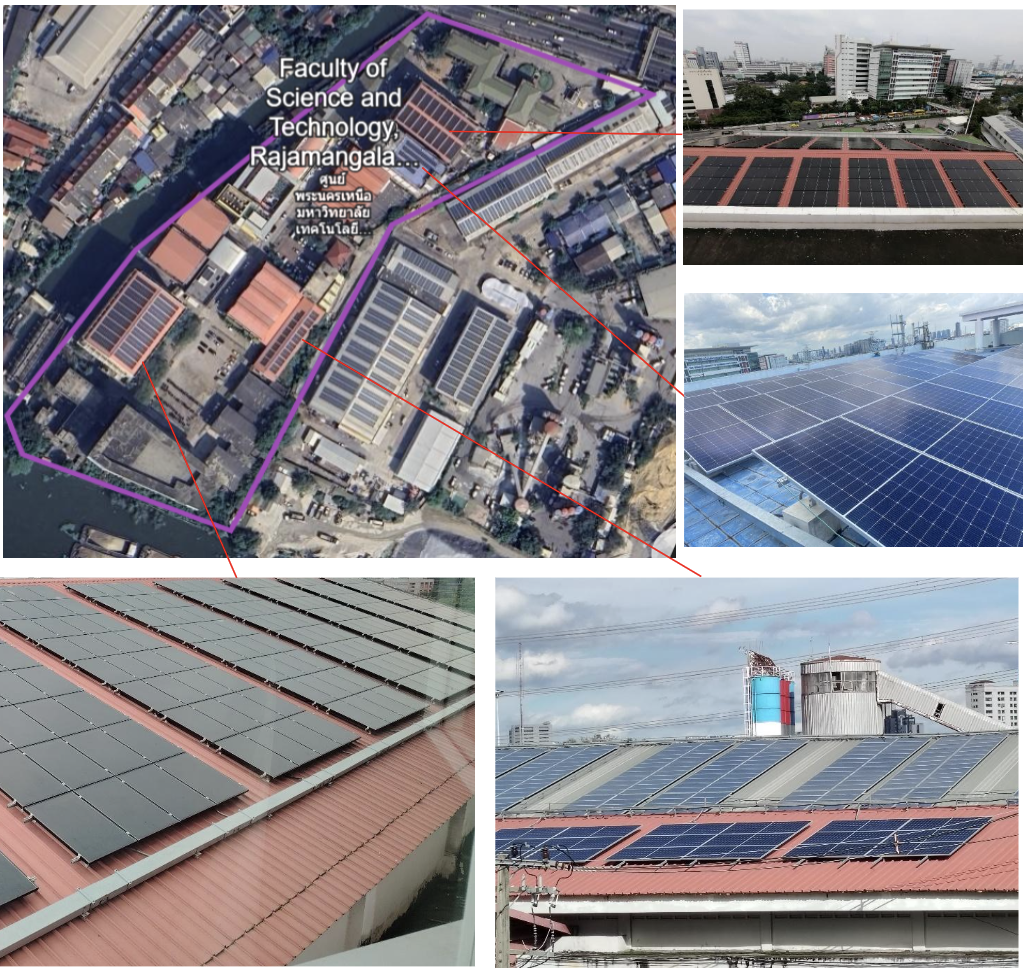
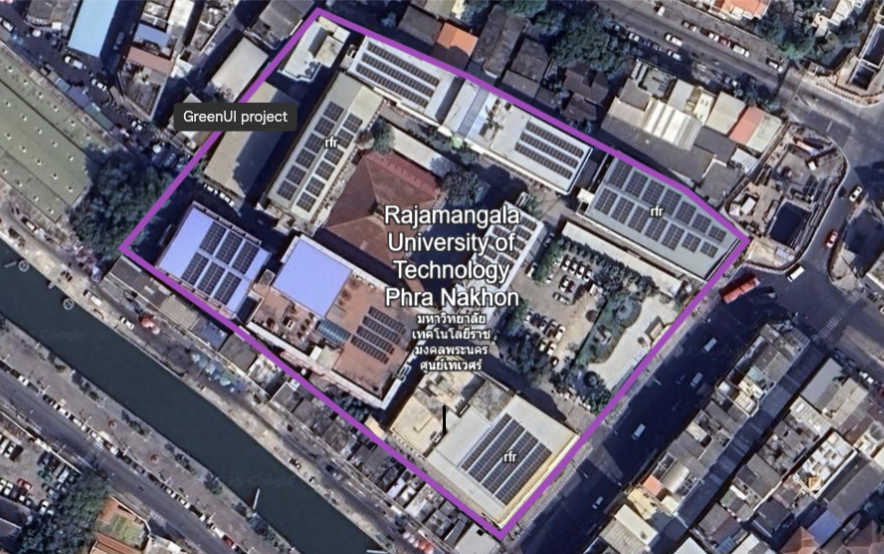
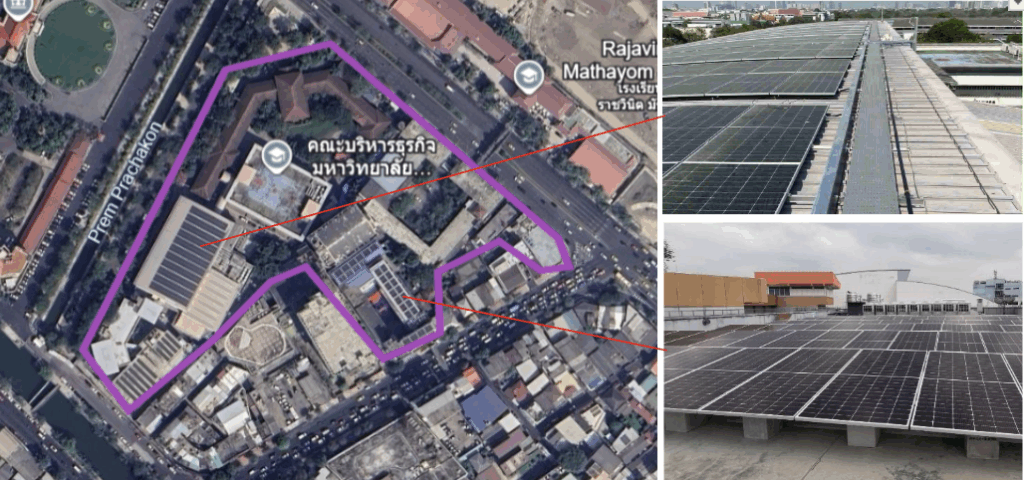
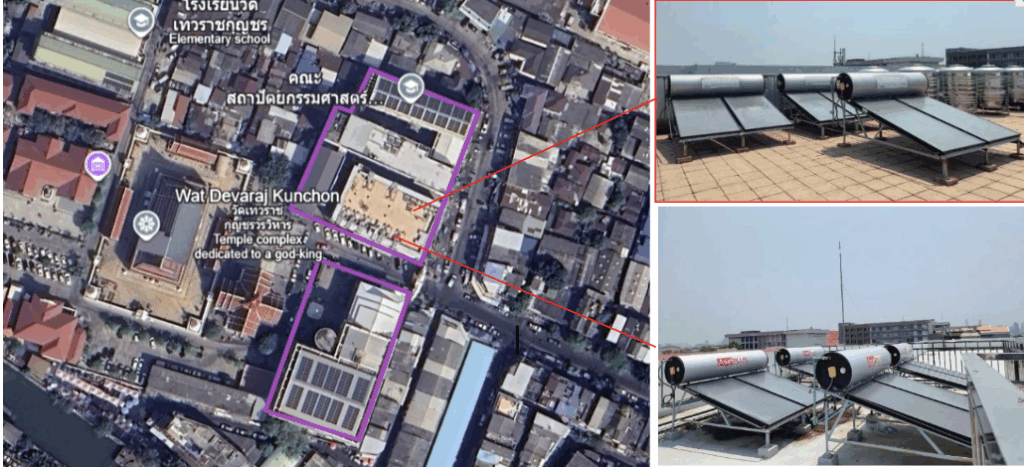
Description:
Rajamangala University of Technology Phra Nakhon has installed solar panels to produce renewable electricity in 4 centers: North Phra Nakhon Center, Thewet Center, and Phra Nakhon Commercial Center and Chotiwet Center. Each center has the following total production capacity:
- North Phra Nakhon Center: Total production capacity of 340,994.28 kWh/year
- Thewet Center: Total production capacity of 416,185.18 kWh/year
- Phra Nakhon Commercial Center: Total production capacity of 182,945.33 kWh/year
- Chotiwet Center : Total production capacity of 607,827 kWh/year
The total solar power generation of Rajamangala University of Technology Phra Nakhon amounts to 1,163,372.95 kWh/year.
Apart from solar power for electronic generation, the university also utilizes the solar power for hot water boiling with the capacity of 36,500 kWh/year.
Electricity Usage per Year (in Kilowatt hour)

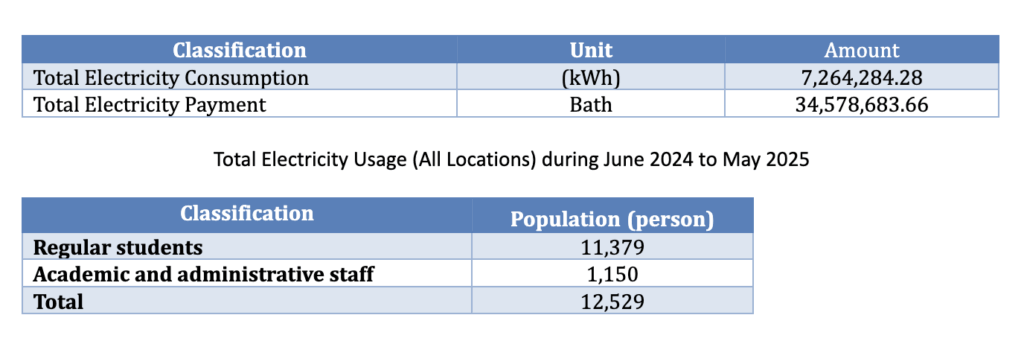
The total electricity usage of Rajamangala University of Technology Phra Nakhon (RMUTP) during June 2024 to May 2025 is 7,264,284.28 kWh. On the five main centers (campuses) areas of RMUTP, electricity is used for lighting, cooling, heating, office’s and laboratory’s appliances. The total university’s population is 12,592 persons, hence, the electricity usage per person in all campuses is 579.8 kWh.
Ratio of renewable energy production divided by total energy usage per year
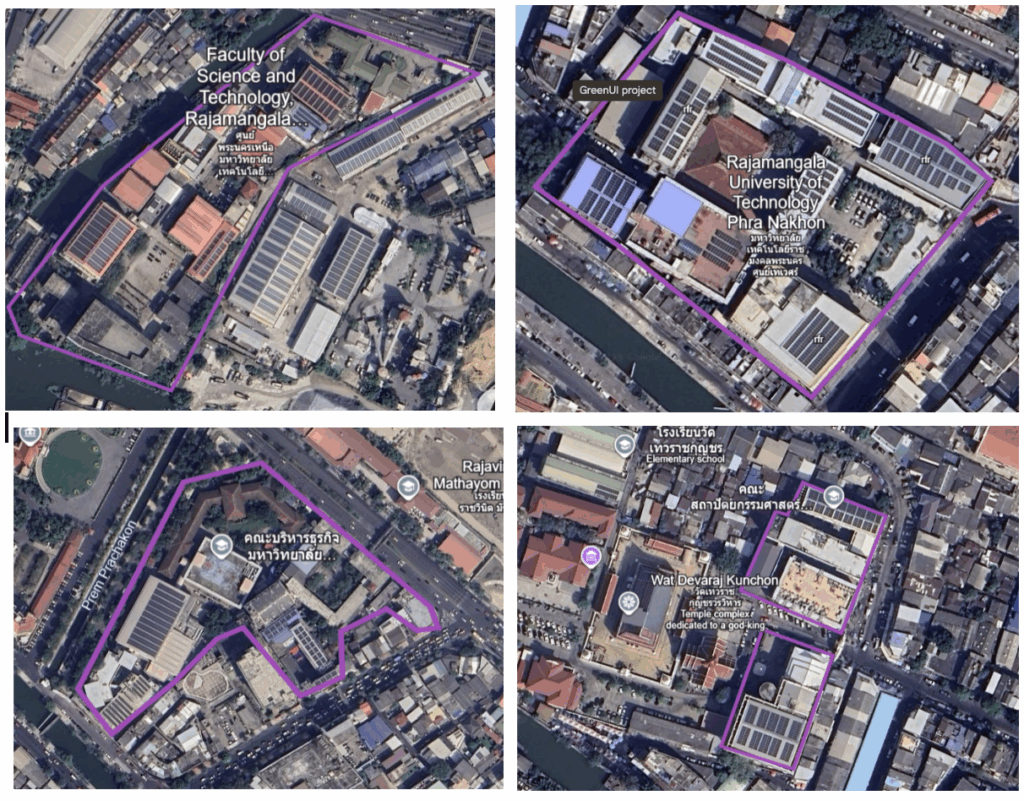
Total electricity usage from June 2024 to May 2025 is 7,264,284.28 kWh.Total of renewable electricity production is 1,163,372.95 kWh/year.
Ratio of renewable energy production divided by total energy usage per year
Renewable Electricity usage = (1,163,372.95 /7,264,284.28) *100 = 16.01 %
Elements of green building implementation as reflected in all construction and renovation policies
Policy of Green University Implementation,
Rajamangala Univeristy of Technology Phranakhon (RMUTP), Thailand

Example of Green Building Implementation
Rajamangala Univeristy of Technology Phranakhon (RMUTP), Thailand
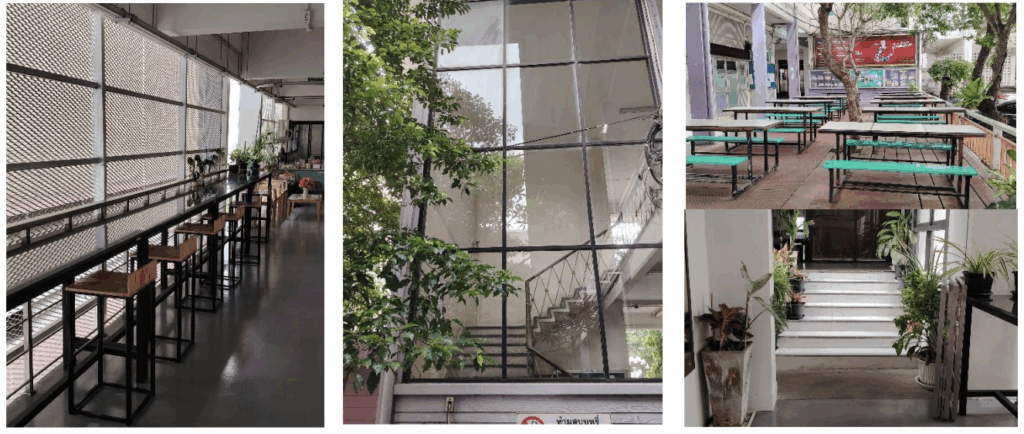

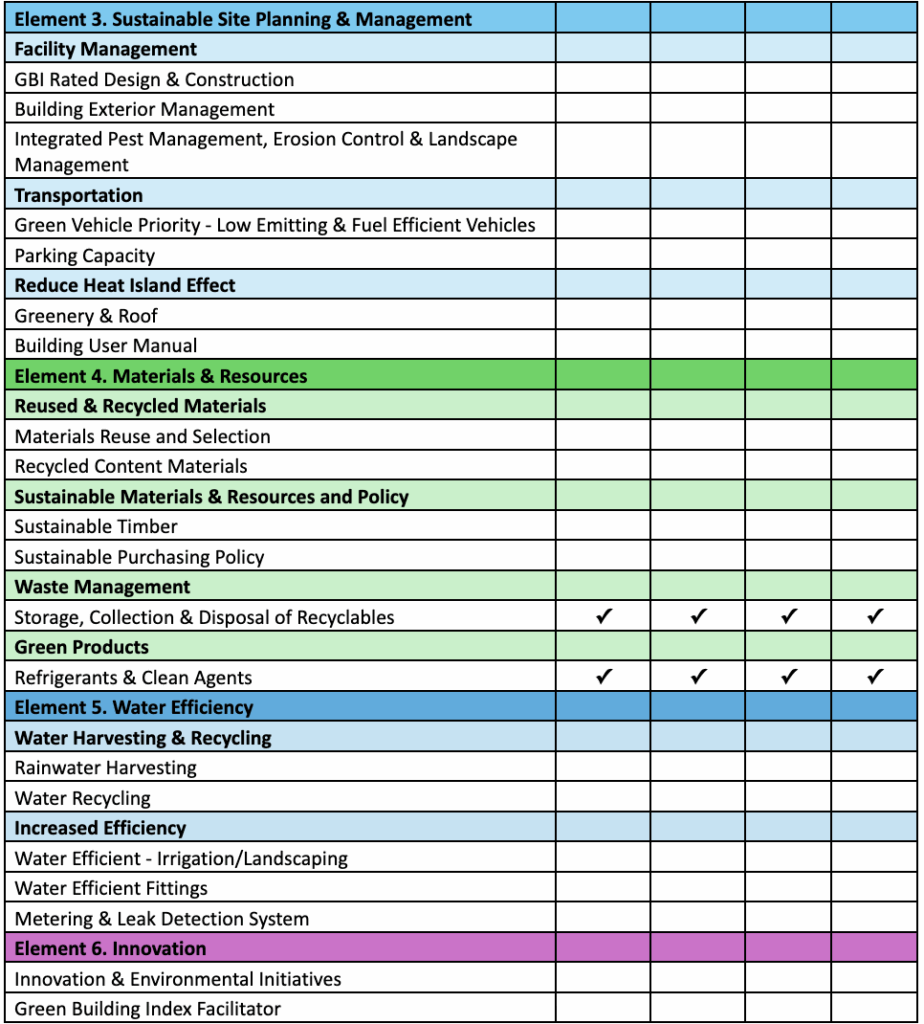
Remark : Center A = North Phra Nakhon Center
Center B = Thewet Center
Center C = Phra Nakhon Commercial Center
Center D = Chotiwet Center
Description:
RMUTP has implemented several green building elements across its various campuses, as detailed in above table. The university’s policies for all construction and renovation projects reflect a commitment to sustainable practices. Key implemented elements include:
- Energy Conservation and Efficiency: All centers utilize natural ventilation, energy-efficient lighting, and automatic power-off systems.
- Renewable Energy: Solar cells are used for lighting in all centers.
- Building Materials and Waste Management: The university has comprehensive waste management systems, including storage, collection, and disposal of recyclables.
- Indoor Environmental Quality: The use of natural ventilation and non-toxic materials contributes to a healthy indoor environment..
Apart from above mentioned, the university’s green building policies also include considerations for water efficiency.
Greenhouse gas emission reduction program
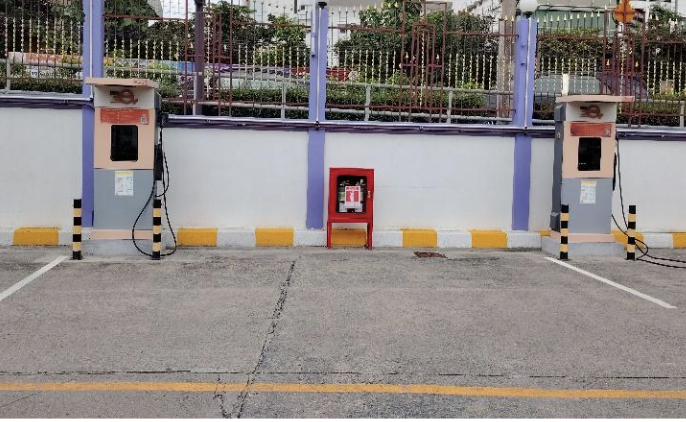
1. Charge parking (North Bangkok Center, Rajamangala Univeristy of Technology Phranakhon (RMUTP),Thailand)

2. Renewable energy (North Bangkok Center, Rajamangala Univeristy of Technology Phranakhon (RMUTP),Thailand)
Description:
In line with the Greenhouse Gas Protocol framework, Rajamangala University of Technology Phra Nakhon (RMUTP) has implemented two key programs to reduce its carbon footprint:
- Installation of Electric Vehicle (EV) Charging Stations: This initiative promotes the adoption of electric vehicles among students, faculty, and staff, thereby reducing greenhouse gas emissions from transportation and commuting.
- On-site Renewable Energy Generation: By installing solar panels, the university generates its own clean electricity, reducing its dependence on purchased grid electricity.
These programs target different emission sources. The EV charging stations encourage a shift to cleaner transportation (primarily addressing Scope 3 emissions). Furthermore, by generating renewable energy on-site, RMUTP directly lowers its Scope 2 emissions, which are indirect emissions resulting from the generation of purchased electricity.
Please Provide The Total Carbon Footprint (CO2 emission in the last 12 months, in metric tons)
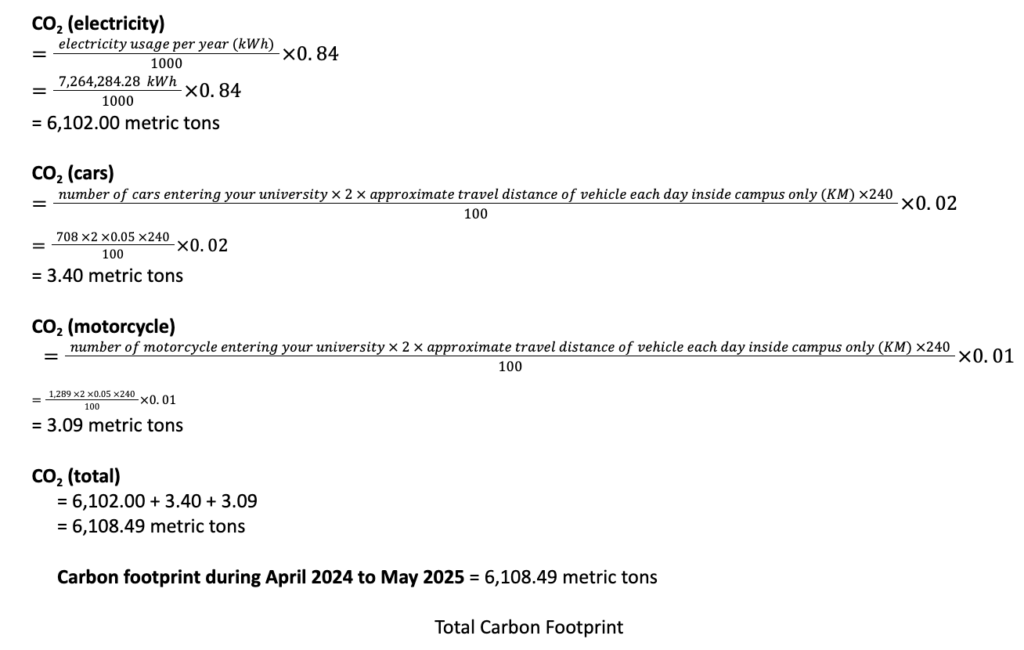
Description:
The total carbon footprint per year is 6,108.49 metric tons and the total carbon footprint per year per person is 6,108.49/12,580 = 0.49 metric tons.
The number of innovative program(s) in Energy and Climate Change
There is no innovative program in Energy and Climate Change.
Impactful university program(s) on climate change
| No | Programs | Scope (international / regional / national / local / etc) | Total Participants | Photo | URL | Short Description |
|---|---|---|---|---|---|---|
| 1 | B.Sc. in Climate and Environmental Management program | National | 6 Teachers 7 Students | 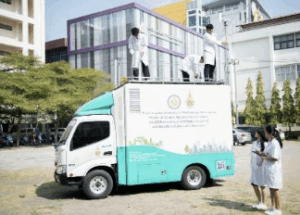 | https://www.rmutp.ac.th/280268 | Rajamangala University of Technology Phra Nakhon (RMUTP) is set to launch Thailand’s first Bachelor of Science (B.Sc.) in Climate and Environmental Management program in the 2025 academic year, offered by the Faculty of Science and Technology. This pioneering initiative aims to cultivate a new generation of experts equipped with the interdisciplinary skills necessary to tackle complex environmental challenges and guide the nation towards a sustainable future. |
Planning, implementation, monitoring and/or evaluation of all programs related to Energy and Climate Change through the utilization of Information and Communication Technology
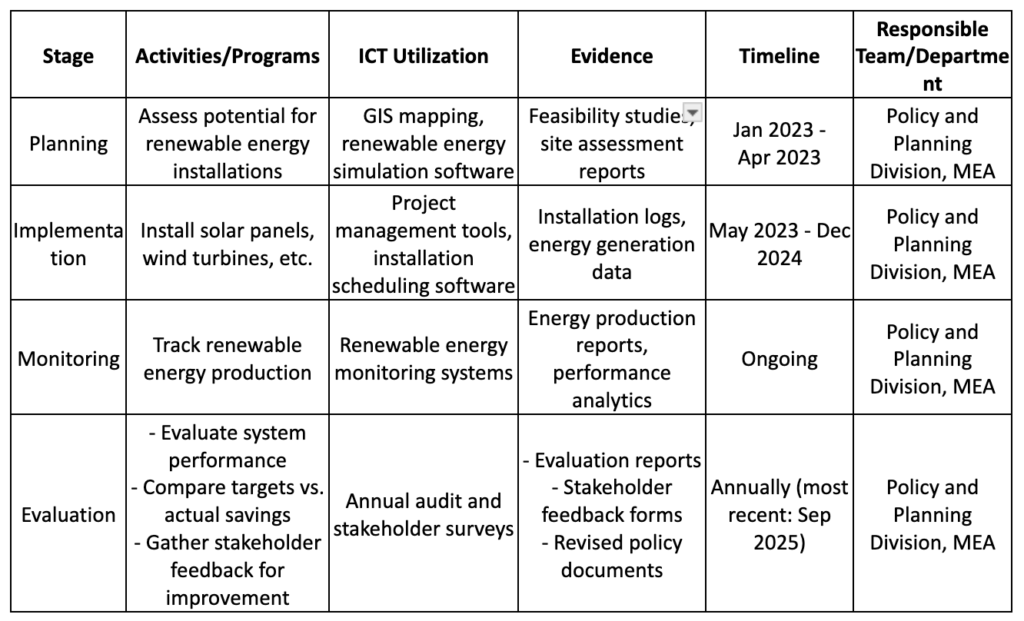
Renewable energy simulation software and installation of renewable energy

Description:
Number of renewable energy sources on campus
- Planning: Conduct feasibility studies using GIS mapping and renewable energy simulation software to assess potential sites for renewable energy installations.
- Implementation: Oversee the installation of renewable energy sources like solar panels and wind turbines, tracking progress with project management tools.
- Monitoring: Use renewable energy monitoring systems to track energy production, generating performance reports and analytics.
Evaluation: Data visualization dashboards (e.g., https://ppd.offpre.rmutp.ac.th/dashbord-ppd-02/) to evaluate energy consumption, renewable generation, and carbon footprint. Stakeholder feedback and cost-benefit analysis reports.
Impact of Energy and Climate Change programs in supporting the Sustainable Development Goals (SDGs)
Example of Climate Change programs in supporting the Sustainable Development Goals at RMUTP,Thailand
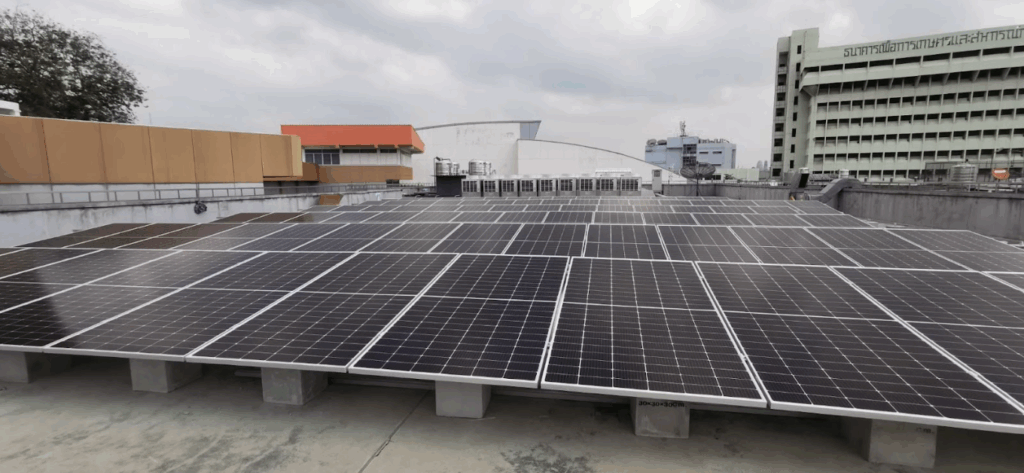
Description:
The university has undertaken a wide range of energy and climate-related programs that contribute significantly to the achievement of the 17 Sustainable Development Goals (SDGs). These initiatives demonstrate a strong commitment to reducing carbon emissions, enhancing energy efficiency, and fostering climate resilience. Key programs include:
- Installation of solar PV systems on building rooftops and open areas to produce renewable electricity and reduce dependency on fossil fuels.
- Adoption of smart building technologies such as automated lighting systems, motion sensors, and digital energy meters to optimize energy use.
- Retrofit programs to replace conventional lighting with LED and energy-efficient equipment in all buildings.
- Incorporation of passive design principles in new building construction, including natural ventilation, daylighting, and thermal insulation.
- Carbon footprint assessments conducted annually, covering scope 2 (purchased energy), and scope 3 (mobility).
- Vehicle restriction and green mobility policies, such as EV charging stations.
- Collaborative climate action plans developed in partnership with local and international organizations to support the university’s sustainability roadmap.
These efforts directly support SDGs 3, 4, 6, 7, 9, 11, 12, 13, and 17, and also contribute indirectly to others, including:
- SDG 3 – Ensuring healthy living environments through improved air quality and indoor climate control
- SDG 4 – Supporting quality education via comfortable and smart learning environments
- SDG 6 – Improving water efficiency in infrastructure operations
- SDG 7 – Increasing the share of affordable, clean energy
- SDG 9 – Innovating with smart infrastructure
- SDG 11 – Building sustainable and low-carbon campuses
- SDG 12 – Promoting responsible energy consumption
- SDG 13 – Addressing climate change through mitigation and adaptation measures
SDG 17 – Strengthening partnerships for sustainable energy development


